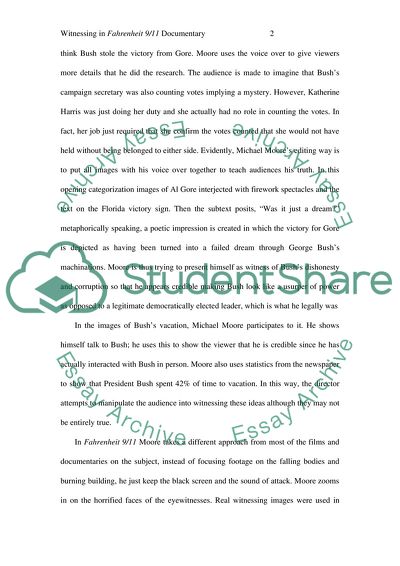Cite this document
(Analysis of Witnessing in Fahrenheit 9/11 Documentary Movie Review Example | Topics and Well Written Essays - 3250 words, n.d.)
Analysis of Witnessing in Fahrenheit 9/11 Documentary Movie Review Example | Topics and Well Written Essays - 3250 words. https://studentshare.org/visual-arts-film-studies/1822927-analyse-documentary-fahrenheit911in-testimony-witnessing-and-ethics
Analysis of Witnessing in Fahrenheit 9/11 Documentary Movie Review Example | Topics and Well Written Essays - 3250 words. https://studentshare.org/visual-arts-film-studies/1822927-analyse-documentary-fahrenheit911in-testimony-witnessing-and-ethics
(Analysis of Witnessing in Fahrenheit 9/11 Documentary Movie Review Example | Topics and Well Written Essays - 3250 Words)
Analysis of Witnessing in Fahrenheit 9/11 Documentary Movie Review Example | Topics and Well Written Essays - 3250 Words. https://studentshare.org/visual-arts-film-studies/1822927-analyse-documentary-fahrenheit911in-testimony-witnessing-and-ethics.
Analysis of Witnessing in Fahrenheit 9/11 Documentary Movie Review Example | Topics and Well Written Essays - 3250 Words. https://studentshare.org/visual-arts-film-studies/1822927-analyse-documentary-fahrenheit911in-testimony-witnessing-and-ethics.
“Analysis of Witnessing in Fahrenheit 9/11 Documentary Movie Review Example | Topics and Well Written Essays - 3250 Words”. https://studentshare.org/visual-arts-film-studies/1822927-analyse-documentary-fahrenheit911in-testimony-witnessing-and-ethics.


